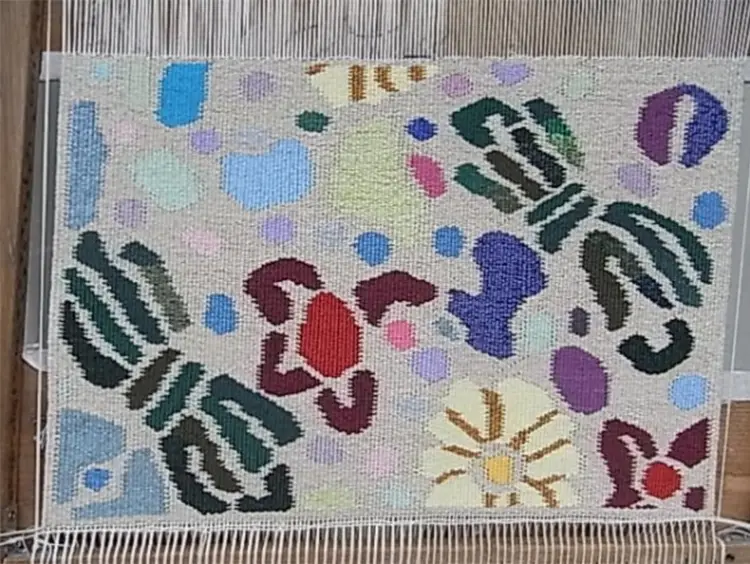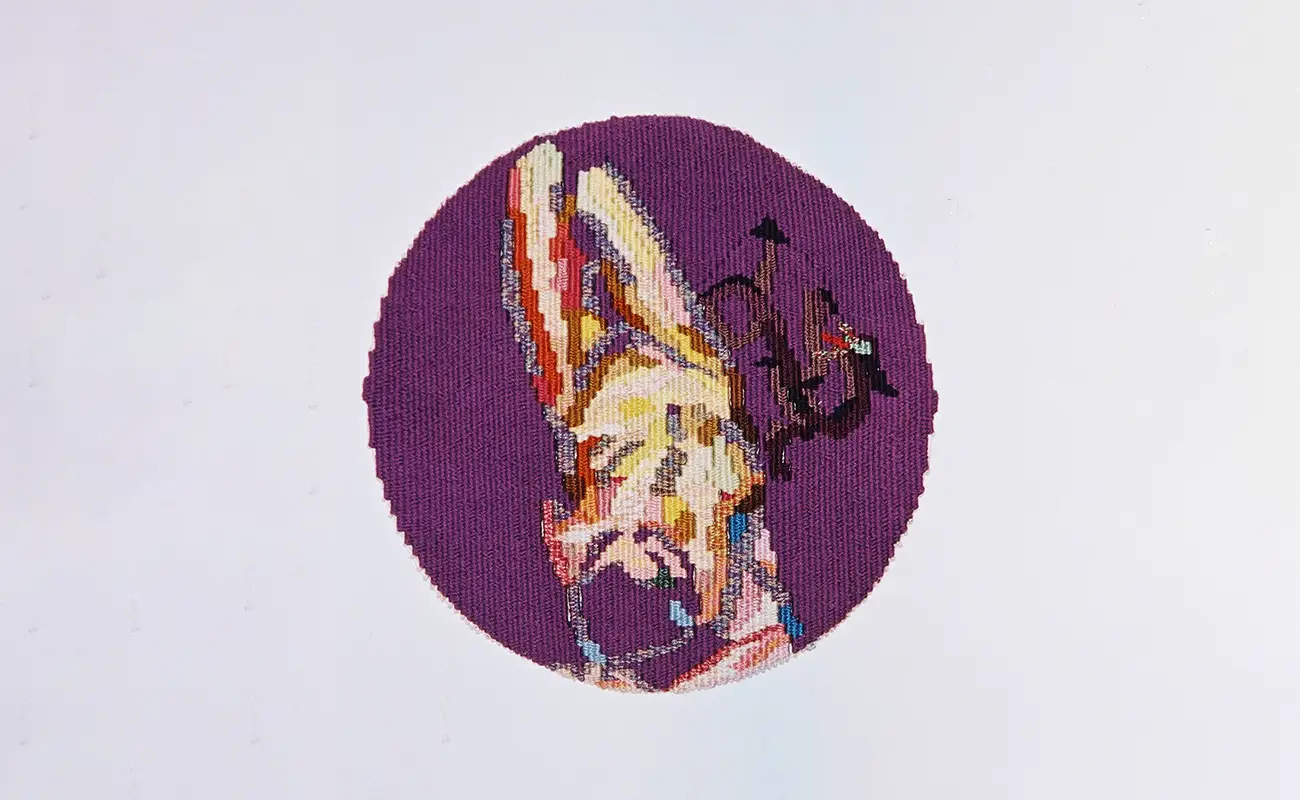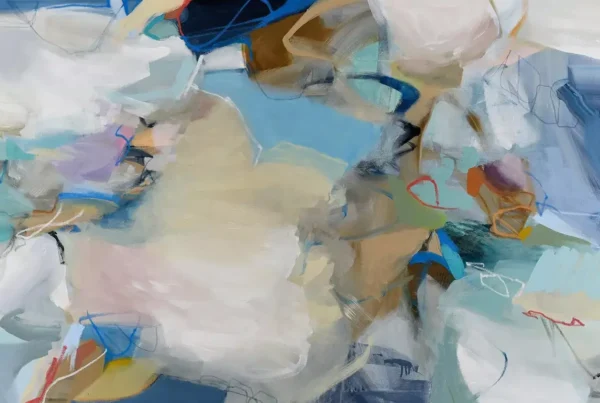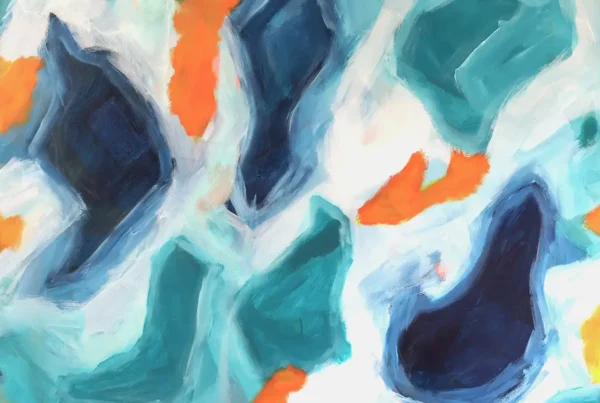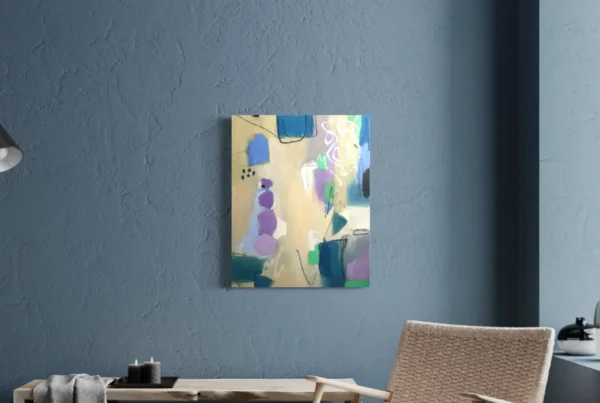“The vision of my art has always been about diaspora, how displaced people recreate culture in the country where they have resettled.”
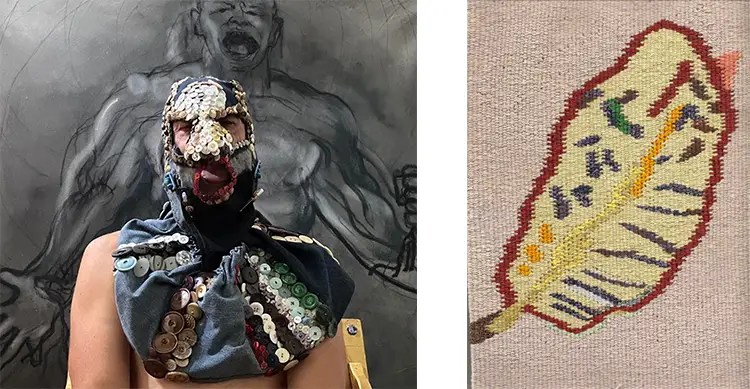
Weaving Memory into Matter
Anton Veenstra‘s textile practice transcends the expected, threading together personal history, cultural displacement, and experimental media into powerfully intimate works. With a background in fine arts and design, culminating in a Master of Design (Hons) from the College of Fine Arts in 2003, his creative path is interwoven with deep cultural inquiry and visual complexity. Under the guidance of Liz Williamson, a leading Australian textile artist, Veenstra honed his technical discipline and conceptual voice, anchoring his vision in the lived experience of migration and the evolving notion of identity.
His work often explores how cultural continuity survives through physical materials—how fabric, thread, and texture can function as vessels of collective memory. Born into a Dutch/Slovenian-Australian family, Veenstra absorbed the richness of textile cultures from both parental lineages. His mother passed on the domestic crafts of sewing and cooking, while his father connected him to the vivid heritage of Dutch artistry. These dual perspectives shaped his approach to artmaking, creating a foundation that is both tenderly personal and sharply observant of broader socio-political structures.
This sense of diasporic identity has remained central to Veenstra’s artistic inquiry since the late 1970s. Lace and tapestry—two contrasting textile languages—serve as conceptual tools through which he examines questions of belonging, absence, and resilience. While lace suggests fragility and openness, tapestry’s density and solidity suggest a more deliberate act of reconstruction. His master’s research in Ljubljana, Slovenia, focused on reinterpreting traditional Slovenian lace motifs through woven tapestry, uniting the visual complexity of voids and forms in a compelling symbolic union.
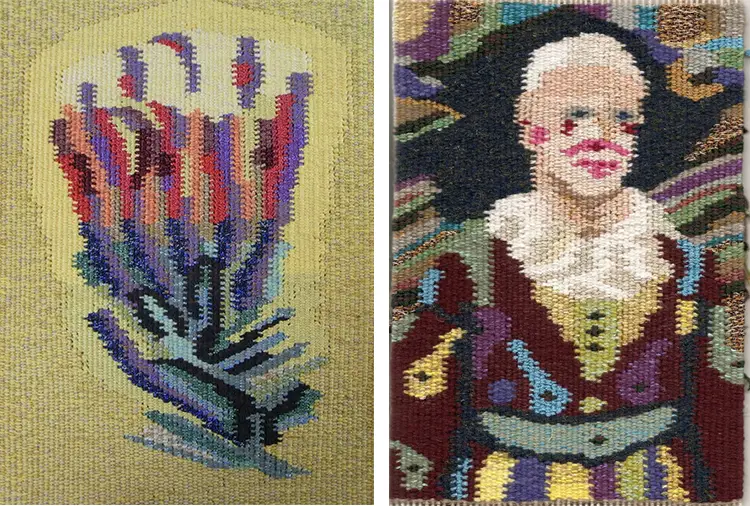
Anton Veenstra: Movement, Material, and Momentum
From the earliest stages of his practice, Veenstra has been driven by the instinct to animate stillness. His compositions rely on a kinetic layering of shapes and materials, where each added form builds on the energy of the last. This cumulative motion offers the viewer a sense of movement contained within static textiles. His artworks avoid stagnation, favoring instead a visual dynamism that evokes both structural intention and intuitive improvisation.
Over time, his use of materials has evolved in tandem with his conceptual interests. While trained as a tapestry artist, Veenstra has never confined himself to traditional textile media. His explorations have included button collages, macramé, and patchwork—each acting as a site of experimentation and storytelling. Notably, he completed a portrait of a couple engaged to be married using only buttons. The work not only achieved a striking visual likeness but played with the ephemerality of surface and memory, inviting contemplation on material impermanence and the fleeting nature of human moments.
Recently, Veenstra has turned to the miniature scale of wearable art, most notably brooches. Working autonomously, he incorporates shaped wire, electrical cable, and multi-colored data cords into these intricate pieces. In them, he transforms utilitarian materials into layered visual statements. His use of the double half hitch—once merely functional in tapestry—now becomes an aesthetic gesture. Here, references to Bridget Riley’s optical dynamism surface subtly through color and pattern play, where wires and buttons weave into vivid visual fields that pulse with rhythm and form.
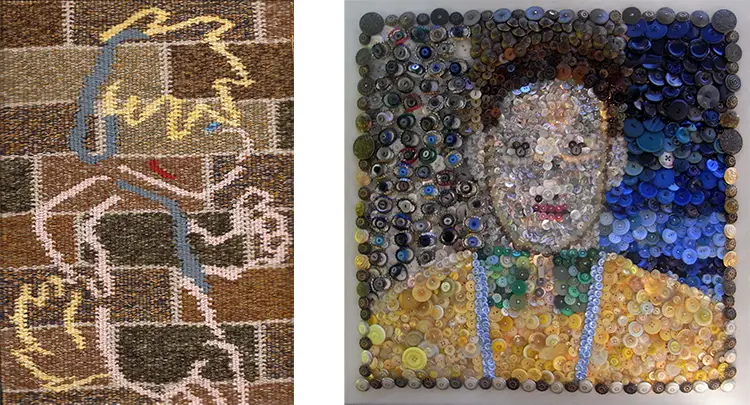
Color, Conflict, and the Power of Detail
Veenstra’s latest work, Indes Galantes, embodies his signature combination of symbolic complexity and delicate craftsmanship. Drawing inspiration from Rameau’s baroque ballet of the same name, he interrogates its colonial undercurrents and projects them into today’s ongoing global tensions. The brooch, measuring 11.5 by 13 centimeters, uses shaped wire embroidered with multicolored data cable to suggest a powerful visual allegory. A bold green area forms an oculus—an eye both watching and being watched—surrounded by textured contours built from a range of hues and materials.
At the center of this microcosmic vision are two translucent buttons and a third bead, a pale green scarab gifted by fellow artist Margaret Linde O’Neill. While the scarab traditionally evokes ancient Egyptian symbolism, Veenstra reimagines it as a frog within a tropical garden, drawing a poetic line between Gauguin’s exotic imagery and his own layered commentary on ecological and cultural transformation. The reverse of the brooch continues this practice of thoughtful reuse: backed with repurposed indigo denim and secured with a faux brass army pin, the piece is an artifact of recycled material and rich conceptual weight.
Beyond its visual appeal, Indes Galantes also confronts the language of imperialism and settler violence. Veenstra positions the colonial gaze—emblematic in the ballet’s grandeur—against contemporary issues of dispossession and resistance. The encroachment of wildlife into the oculus reflects not only the invasive eye of power but also the persistence of life at the edges of systems that seek to control it. In this synthesis of visual metaphor and technical skill, the brooch becomes a philosophical object: intimate, provocative, and charged with historical resonance.
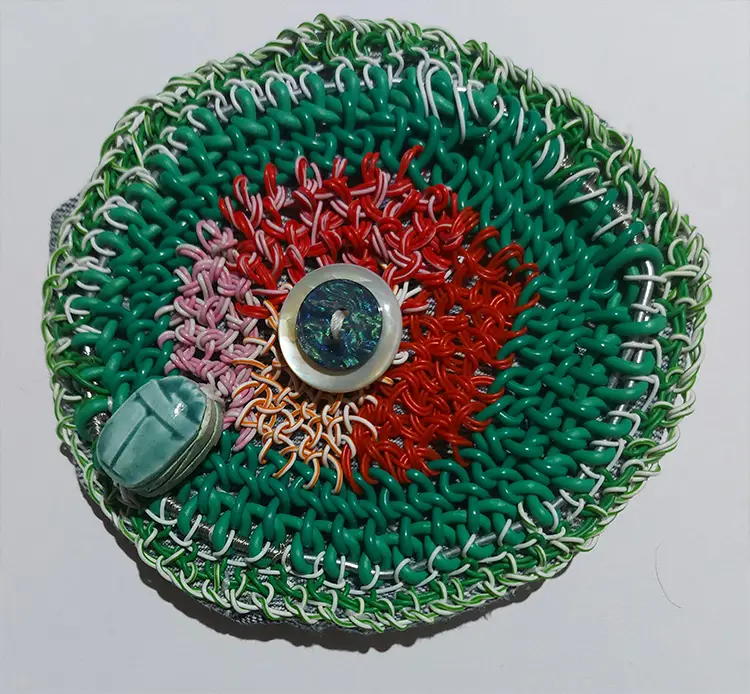
Anton Veenstra: Narratives That Embroider History
Veenstra’s practice is anchored not just in material exploration but in a deep engagement with cultural history and artistic lineage. His admiration for Dutch masters like van Gogh and Cobra movement artist Karel Appel, as well as early inspirations such as El Greco and Cézanne, has informed a style that favors bold expression, emotional intensity, and structural clarity. This influence is evident in works like Dragon Bite, a tapestry study of El Greco’s Laocoön, completed during his studies in Ljubljana and Trieste. Through this reinterpretation, Veenstra connects classical drama to contemporary questions of fate and struggle.
His interest in historical narratives is equally evident in Harvesting, a piece based on a photograph by Mario Magajna, the Italian-Slovenian photographer who dedicated his life to documenting the Slovenian diaspora in Italy. The artwork centers on a young man collecting chestnuts near Venice, a subtle nod to Veenstra’s maternal heritage and the rhythms of labor and ritual passed down through generations. Here, the act of harvest becomes a metaphor for cultural transmission: the gathering of memory, skill, and resilience into a form that can be preserved and transformed.
Veenstra’s impact on the art world has been recognized in numerous exhibitions across Australia, the United States, the United Kingdom, Italy, Slovakia, and Ukraine. His piece War, a small red and black tapestry depicting the lead singer of The Angels, was shown in the US exhibition Tiny But Huge in 2019. Merging expressionist force with fiber technique, the work honors the role of music and protest in shaping cultural identity. Similarly, his contribution to the 2015 group show More Love Hours at the Ian Potter Museum, which included a woven tribute to a Greek statue of Apollo recovered by a Palestinian fisherman, underscores his ability to navigate art, history, and geopolitics with precision and empathy.
